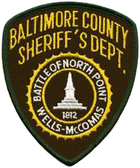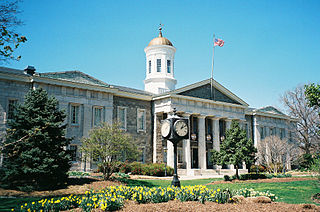
Baltimore County is the third-most populous county in the U.S. state of Maryland and is part of the Baltimore metropolitan area. Baltimore County is part of the Northeast megalopolis, which stretches from Northern Virginia northward to Boston. Baltimore County hosts a diversified economy, with particular emphasis on education, government, and health care. As of the 2020 census, the population was 854,535.
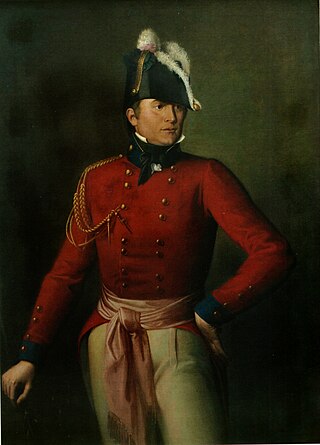
Major-General Robert Ross was an Irish officer in the British Army who served in the Napoleonic Wars and its theatre in North America in the War of 1812.

Interstate 695 (I-695) is a 51.46-mile-long (82.82 km) auxiliary Interstate Highway that is a full beltway extending around Baltimore, Maryland, United States. I-695 is officially designated the McKeldin Beltway but is colloquially referred to as either the Baltimore Beltway or 695. The route is an auxiliary route of I-95, intersecting that route southwest of Baltimore near Arbutus and northeast of the city near White Marsh. It also intersects other major roads radiating from the Baltimore area, including I-97 near Glen Burnie, the Baltimore–Washington Parkway near Linthicum, I-70 near Woodlawn, I-795 near Pikesville, and I-83 in the Timonium area. The 19.37-mile (31.17 km) portion of the Baltimore Beltway between I-95 northeast of Baltimore and I-97 south of Baltimore is officially Maryland Route 695 (MD 695) and is not part of the Interstate Highway System but is signed as I-695. This section of the route includes the Francis Scott Key Bridge that crosses over the Patapsco River. The bridge and its approaches are maintained by the Maryland Transportation Authority (MDTA) while the remainder of the Baltimore Beltway is maintained by the Maryland State Highway Administration (MDSHA).

Old Saint Paul's Cemetery is a cemetery located in downtown Baltimore, Maryland, United States. It is noted for the several important historical figures that are interred in its grounds.

Patapsco High School and Center For The Arts is a public high school in the United States, located in Dundalk in Baltimore County, Maryland, near Baltimore.
Defenders Day is a longtime legal holiday on September 12, in the U.S. state of Maryland, in the City of Baltimore and surrounding Baltimore County. It commemorates the successful defense of the city of Baltimore on September 12-13-14, 1814 from an invading British force during the War of 1812, an event which led to the writing of the words of a poem, which when set to music a few days later, became known as "The Star-Spangled Banner", which in 1931 was designated as the national anthem of the United States.
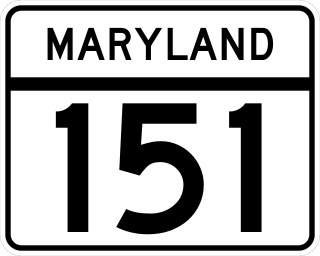
Maryland Route 151 (MD 151) is a state highway in the U.S. state of Maryland. Known for most of its length as North Point Boulevard, the state highway runs 10.80 miles (17.38 km) from 7th Street in Sparrows Point north to U.S. Route 1 (US 1) in Baltimore. MD 151 is a four- to six-lane divided highway that connects the communities of Edgemere and Dundalk on the Patapsco River Neck peninsula of southeastern Baltimore County with industrial areas in Sparrows Point and East Baltimore. MD 151 was originally constructed in the early 1920s from Sparrows Point to Edgemere. The highway was connected to Baltimore by the Baltimore County portion of MD 20, a number also assigned to the highway from Rock Hall to Chestertown in Kent County. During World War II, MD 151 was extended north through Dundalk on a new divided highway parallel to MD 20 and through East Baltimore on an expanded Erdman Avenue to connect the Bethlehem Steel complex at Sparrows Point with MD 150 and US 40. In the late 1960s and early 1970s, Interstate 695 (I-695) was constructed parallel to MD 151 between Edgemere and MD 157 in Dundalk.
St. Helena is a neighborhood in the cities of Baltimore and Dundalk in the U.S. state of Maryland. The border between the cities, which is also the border between Baltimore County and Baltimore City, divides the neighborhood. The neighborhood was named by Colonel Arthur Bryan after the island of Saint Helena. It has a mix of rowhouses and detached homes. It is divided by railroad tracks from the Point Breeze Industrial Park.

Brigadier General John Stricker (1758–1825) was a Maryland state militia officer who fought in both the American Revolutionary War in the First Maryland Regiment of the famous "Maryland Line" of the Continental Army and in the War of 1812. He commanded the Third Brigade of the Maryland state militia in the Battle of North Point on Monday, September 12, 1814, which formed a part of the larger Battle of Baltimore, along with the subsequent British naval bombardment of Fort McHenry on September 13-14th, and was a turning point in the later months of the War of 1812 and to the peace negotiators across the Atlantic Ocean for the Treaty of Ghent, in the city of Ghent then in the Austrian Netherlands,, which finally arrived at a peace treaty on Christmas Eve of December 1814, of which news finally reached America in February 1815.
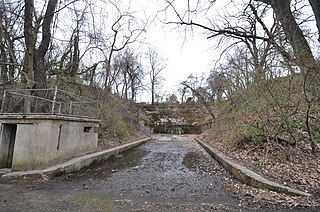
Fort Howard was a military installation located on the North Point peninsula, overlooking the main channel of the Patapsco River leading into the harbor of Baltimore, Maryland, USA. Although militarily important since the early 19th century, its surviving elements and name date to the Spanish–American War. It was named by Elihu Root, Secretary of War under President Theodore Roosevelt, in 1902 after Colonel John Eager Howard (1752–1827). The installation earned the nickname the "Bulldog at Baltimore's Gate", serving as the coastal artillery headquarters for Baltimore, Maryland. Fort Howard's historical significance is its military connection with the War of 1812, the Spanish–American War, and World War II.

In the United States, a sheriff is the chief of law enforcement of a county. Sheriffs are usually either elected by the populace or appointed by an elected body.

The Anne Arundel County Sheriff's Office (AASO) is the law enforcement arm of the court, serving the citizens of Anne Arundel County, Maryland. All deputy sheriffs are certified law enforcement officials with full authority of arrest.
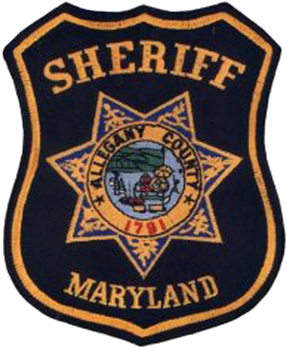
The Allegany County Sheriff's Office (ACSO) is the primary law enforcement agency for Allegany County, Maryland. The ACSO is a nationally accredited law enforcement agency servicing 430 square miles (1,100 km2) and a population of 75,300.

The Calvert County Sheriff's Office (CCSO) is the primary law enforcement agency servicing over 87,000 residents and 213 square miles (550 km2) in Calvert County, Maryland.
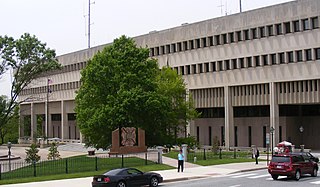
The Baltimore County Courthouses are located in Towson, Maryland, US the county seat. The older, original Baltimore County Courthouse of 1854-1856 houses many of the offices of the County government, including both the executive branch and the legislative branch. The County Courts Building lies to the west, separated by a plaza. Built in 1970-1971, it houses the civil, criminal, family and juvenile divisions of the 3rd Judicial Circuit of the Circuit Courts of Maryland, as well as the Baltimore County Sheriff's Office. The latter office protects the Courthouse and its judicial personnel, as well as having countywide law enforcement functions.


The Prince George's County Sheriff's Office (PGSO), officially the Office of the Sheriff, Prince George's County, provides law enforcement services in Prince George's County, Maryland in the United States. Its headquarters are located in Upper Marlboro, near the Depot Pond. The sheriff is the chief law enforcement officer of Prince George's County and is elected every four years. There are no term limits for the sheriff.

The Baltimore City Sheriff's Office is the law enforcement arm of the court, serving Baltimore City, Maryland. The office is headquartered in the Baltimore City Circuit Courthouses which serves as the sites for the Circuit Court of Maryland for Baltimore City.

The Allegheny County Sheriff's Office is a law enforcement agency that serves Allegheny County, Pennsylvania, and is the largest sheriff's office in the state. The ACSO serves as a local arm of the Pennsylvania Unified Judicial System in a number of roles, including: court security, writ services, sales, prisoner transportation, issuing of firearm licenses and execution of warrants. A primary responsibility of the office is fugitive apprehension. The Sheriff's Office also assists local law enforcement agencies with emergency and incident response on an as-needed basis, most notably through the use of trained police canines.

The Patapsco Valley is a small valley surrounding the Patapsco River in central Maryland. The region is known for its historical significance as a major economic and industrial center in the eighteenth and nineteenth centuries.
